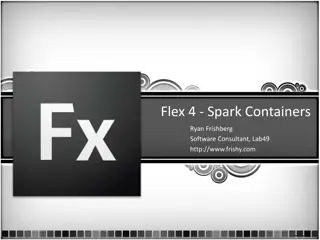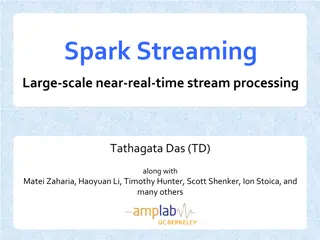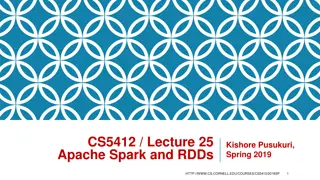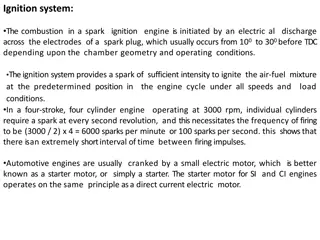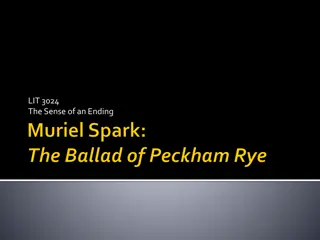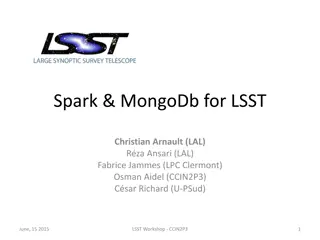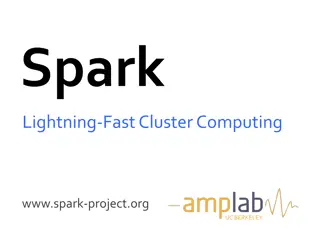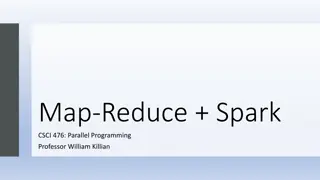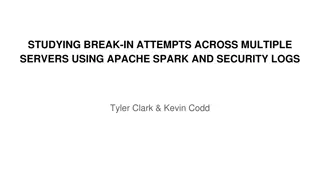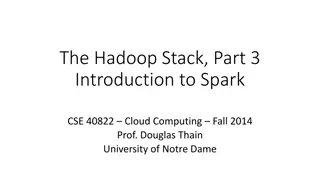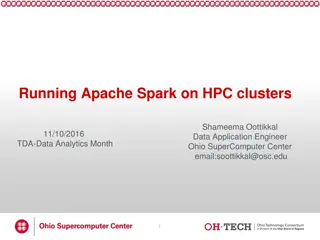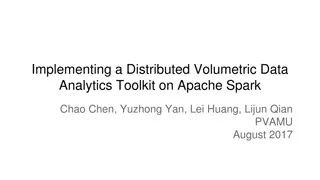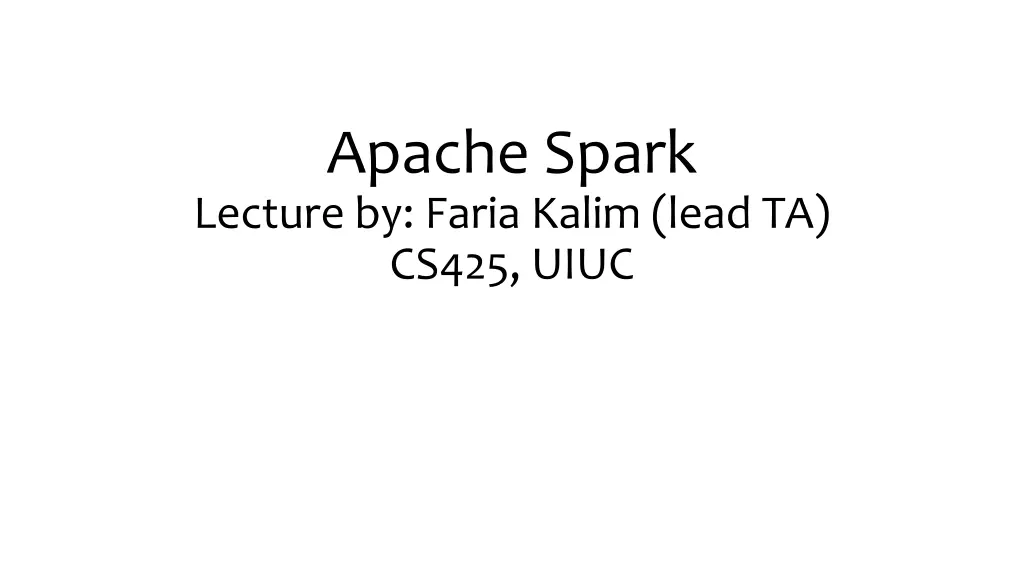
Apache Spark Lecture by Faria Kalim: Revolutionizing Big Data Analytics
Explore the compelling reasons behind using Apache Spark over MapReduce, focusing on its innovative features like Resilient Distributed Datasets (RDDs) and fault tolerance mechanisms. Understand the transformative potential of Spark in simplifying large-scale data processing tasks and enhancing efficiency in commodity clusters.
Download Presentation

Please find below an Image/Link to download the presentation.
The content on the website is provided AS IS for your information and personal use only. It may not be sold, licensed, or shared on other websites without obtaining consent from the author. If you encounter any issues during the download, it is possible that the publisher has removed the file from their server.
You are allowed to download the files provided on this website for personal or commercial use, subject to the condition that they are used lawfully. All files are the property of their respective owners.
The content on the website is provided AS IS for your information and personal use only. It may not be sold, licensed, or shared on other websites without obtaining consent from the author.
E N D
Presentation Transcript
Apache Spark Lecture by: Faria Kalim (lead TA) CS425, UIUC
Why Spark? Another system for big data analytics Isn t MapReduce good enough? Simplifies batch processing on large commodity clusters
Why Spark? MapReduce can be expensive for some applications e.g., Iterative Interactive Lacks efficient data sharing Specialized frameworks did evolve for different programming models Bulk Synchronous Processing (Pregel) Iterative MapReduce (Haloop) .
Solution: Resilient Distributed Datasets (RDDs) RDDs Immutable, partitioned collection of records Built through coarse grained transformations (map, join ) Can be cached for efficient reuse
RDD RDD RDD Read HDFS Cache Read Reduce Map
Solution: Resilient Distributed Datasets (RDDs) RDDs Immutable, partitioned collection of records Built through coarse grained, ordered transformations (map, join ) Fault Recovery? Lineage! Log the coarse grained operation applied to a partitioned dataset Simply recompute the lost partition if failure occurs! No cost if no failure
RDD RDD RDD Read HDFS Cache Read Map Reduce Read Reduce Map Lineage HDFS RDD RDD RDD
RDD RDD RDD Read HDFS Cache RDDs track the graph of transformations that built them (their lineage) to rebuild lost data Read Map Reduce Read Reduce Map Lineage HDFS RDD RDD RDD
What can you do with Spark? RDD operations Transformations e.g., filter, join, map, group-by Actions e.g., count, print Control Partitioning Persistence
Partitioning PageRank Links Ranks (url, ranks) Joins take place repeatedly (url, neighbors) Good partitioning reduces shuffles Contributions Ranks (url, ranks) Contributions
Generality RDDs allow unification of different programming models Stream Processing Graph Processing Machine Learning ..
Gather-Apply-Scatter on GraphX A B Vertices Neighbors B A A B A C A C B C D C B C D C D C Graph Represented In a Table Triplets
Gather-Apply-Scatter on GraphX A B B A A C B C D C D C Group-By A Gather at A
Gather-Apply-Scatter on GraphX A B B A A C B D C C D C Apply Map
Gather-Apply-Scatter on GraphX A B B C A B B A A C C B D C B C A C C D D C Scatter Triplets Join
Summary RDDs provide a simple and efficient programming model Generalized to a broad set of applications Leverages coarse-grained nature of parallel algorithms for failure recovery

